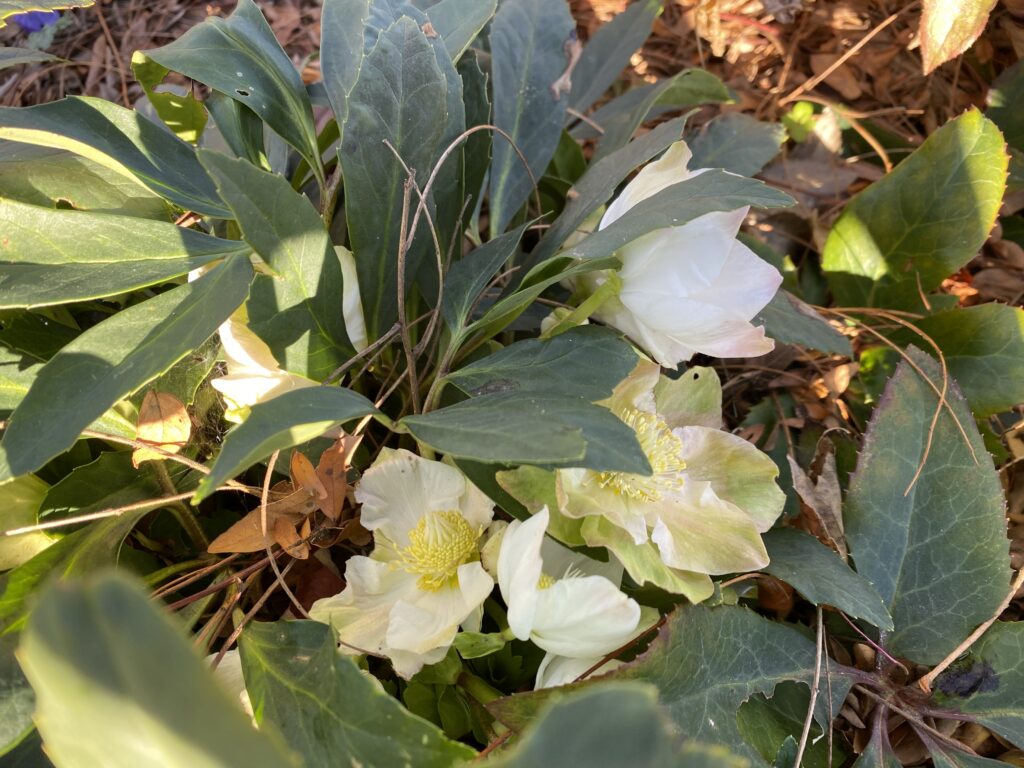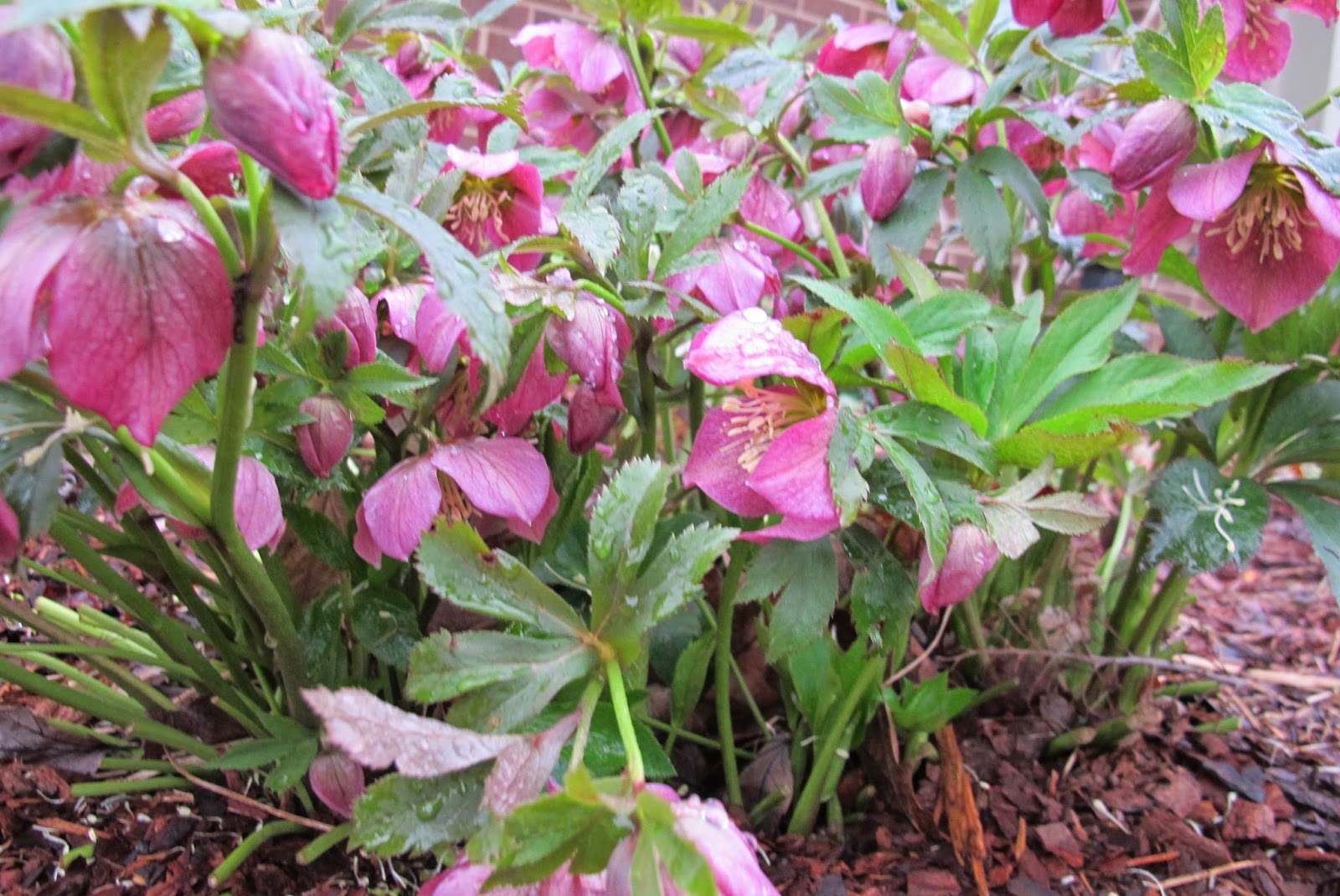
If you have a hellebore blooming now, or sometime over the winter, chances are it is Helleborus niger, commonly called the Christmas Rose because it usually blooms in the wintertime.
Though honestly, I don’t think you’ll find a Christmas Rose that is the straight species. Most on the market today are hybrids of some kind and have white or soft pink flowers.
My Christmas Rose started blooming a few weeks ago, and due to the sturdy nature of the blooms, those flowers will hang around all winter, more or less. So will the foliage until I remove it in the spring.
If you have a hellebore that blooms in early spring, chances are it is Helleborus orientalis or more likely a hybrid with the name on the tag listed as Helleborus x hybridus. Because they bloom in the spring, we call them Lenten Roses. They are also likely to be some shade of pink or purple or mauve, and occasionally white. Some of them will also have speckles or spots on them.

Though for same strange reason, I bought one—and paid good money for it—that has mostly green flowers. Poor little thing is kind of struggling, stuck underneath and between two oak leaf hydrangeas. I should move it this spring, but that’s a post for another day.
If you are looking for a true Christmas Rose for your garden, you can sometimes find them at local garden centers in the spring, but they won’t look like much. Just leaves. Most gardeners will pass them by unless they know what’s unique about them. Winter blooms! (In case you didn’t know.)
Another good way to acquire Christmas Roses for your garden is to look for them as potted plants around Christmas. (I read that at one time they were more popular than poinsettias, but that was a long time ago!)
If you find one, buy it. In my city, I found them once at a Kroger store, and more regularly at Trader Joe’s. Enjoy the blooms as a potted plant over Christmas, then put that plant in the coldest part of your house until spring. 55F wouldn’t be too cold for it. Be careful not to over-water it and check it regularly for spider mites and other bugs that might attack it. Then in the spring, gradually introduce it to the great outdoors, then plant it in a spot that gets some shade, but not deep shade, with rich, well-draining soil. Ideally, this spot is also close to your house so you don’t have to venture far to see the blooms.
Again, don’t overwater it! Let it grow and if you are lucky, in time, it will start to bloom in the wintertime, outdoors, often with snow all around it.


I only have one, a darker maroon shade. You’re right, I should add more – the color they bring so early in the year is worth the spot in the garden.
I have quite a colony of Lenten Roses now, the old-fashioned ones, that merrily spread and seed themselves. I love them because they bloom for such a long time, require little maintenance, the deer don’t eat them and they happily thrive junder a black wlanut tree. I have shades of mauve, pink and even a white one.
Keep in Mind these flowers are poisonous to all animals…that is why deers do not bother them.
Correct, and any animal that would eat them becomes a victim of natural selection. Evolution…